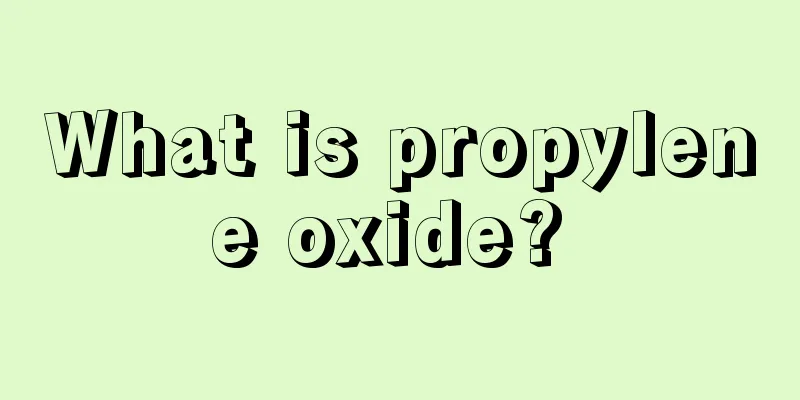What is propylene oxide?

|
In modern life, people's productivity has expanded rapidly, and many new things have emerged, which are very beneficial to people's production and life. For example, propylene oxide is a common industrial raw material, but this substance is generally used in large-scale industrial production, and it has certain irritation and is harmful to the human body, so it is difficult for ordinary people to see it. Let’s take a look at what propylene oxide is. Propylene oxide, also known as propylene oxide and methyl ethylene oxide, is a very important raw material of organic compounds and the third largest propylene derivative after polypropylene and acrylonitrile. Propylene oxide is a colorless ether-smelling liquid with a low boiling point and is flammable. It is chiral, and the industrial product is generally a racemic mixture of two enantiomers. Partially miscible with water, miscible with ethanol and ether. It forms binary azeotropic mixtures with pentane, pentene, cyclopentane, cyclopentene and dichloromethane. It is toxic and irritating to mucous membranes and skin. It can damage the cornea and conjunctiva, cause respiratory pain, skin burns and swelling, and even tissue necrosis. use: Propylene oxide (PO) is the third largest propylene derivative after polypropylene and acrylonitrile. It is an important basic organic chemical synthesis raw material and is mainly used in the production of polyethers, propylene glycol, etc. It is also the main raw material for the fourth-generation detergent non-ionic surfactant, oil field demulsifier, pesticide emulsifier, etc. Propylene oxide derivatives are widely used in industries such as automobiles, construction, food, tobacco, medicine and cosmetics. Nearly 100 downstream products have been produced, which are important raw materials for fine chemical products. Safety and toxicity: Propylene oxide products are flammable and should be stored in a ventilated, dry, low-temperature (below 25°C) and cool place. They should not be exposed directly to sunlight and should be isolated from fire sources. Propylene oxide is toxic. Liquid propylene oxide can cause burns to the skin and cornea. Its vapor is irritating and has a mild anesthetic effect. Prolonged inhalation of propylene oxide vapor can cause symptoms such as nausea, vomiting, headache, dizziness and diarrhea. All personnel who come into contact with propylene oxide should wear prescribed protective equipment, and the workplace should comply with national safety and environmental regulations. Propylene oxide is a flammable and explosive chemical and its vapors will decompose. Avoid handling and storing propylene oxide with metals such as copper, silver, and magnesium. Excessive contamination of propylene oxide by acidic salts (such as tin chloride, zinc chloride), alkalis, tertiary amines, etc. should also be avoided. Propylene oxide fires should be extinguished with special foam liquid. |
<<: Chloasma on the back of the hand
>>: What should I do if my forehead is not full and sunken?
Recommend
How to recover quickly from tibial periostitis?
If patients with tibial periostitis want to recov...
The difference between bivalent, quadrivalent and nonavalent cervical cancer vaccines
Cervical cancer vaccines are divided into bivalen...
A little soreness on the buttocks
There is often a little soreness in the buttocks....
Small pimples under the hair
Tiny bumps growing under the hair are acne. This ...
What are the symptoms of advanced lung cancer? Five clinical symptoms of advanced lung cancer
Death, what a terrible word. Some people say: You...
How to prevent pancreatic cancer
People who like to eat high-fat, high-calorie foo...
How to make boys grow taller
In our lives, many people want to have a tall fig...
Can aloe vera purify indoor air?
In life, many people like aloe vera very much, be...
What are the disadvantages of not getting sun exposure
With the quickening pace of modern life, more and...
Does it hurt after the anesthesia for painless abortion
Painless abortion means that during the abortion ...
What does a negative cervical cancer screening test mean
What does a negative cervical cancer screening re...
Will wearing glasses make my eyes smaller?
Nowadays, more and more people are beginning to e...
How to use clothing disinfectant?
In real life, disinfectant is a relatively common...
How to treat the late stage of prostate cancer after endocrine therapy
After endocrine therapy for prostate cancer, subs...
Why does my ear hurt and itch?
If there is pain and itching inside the ear, it i...









